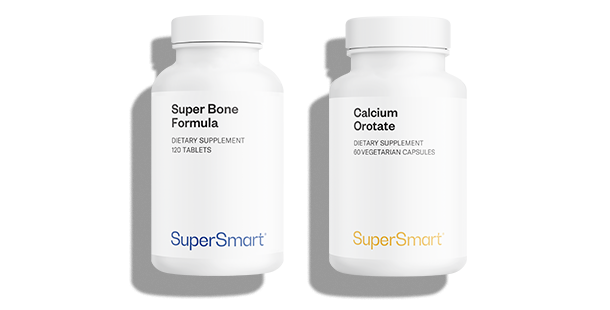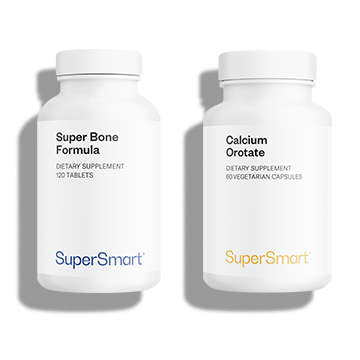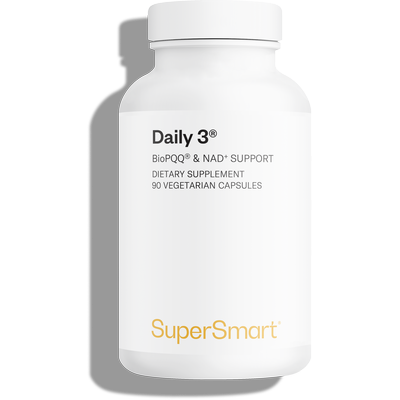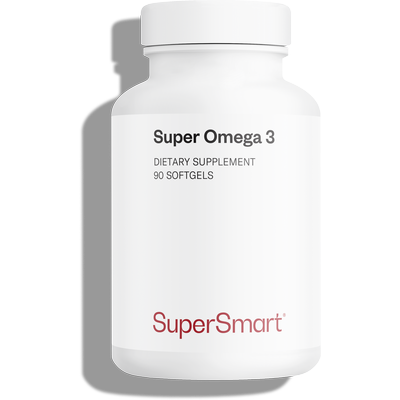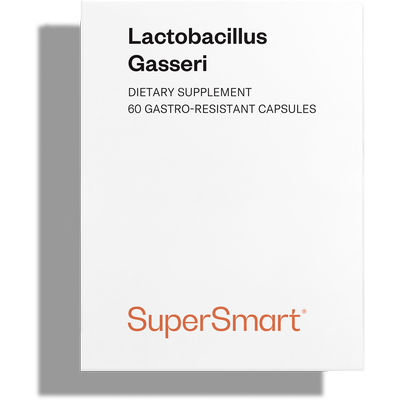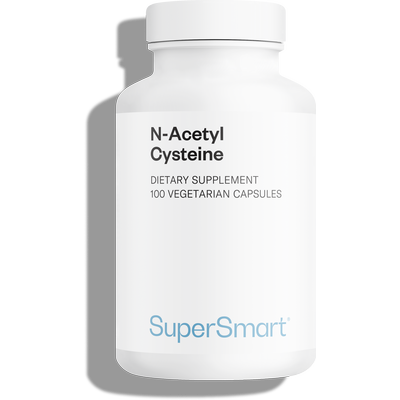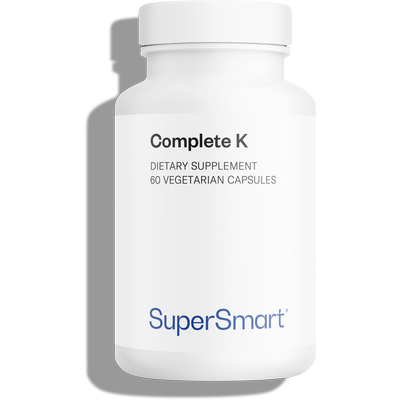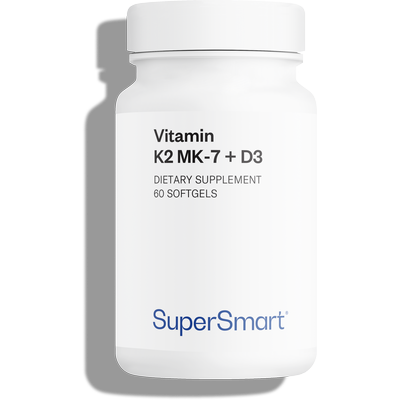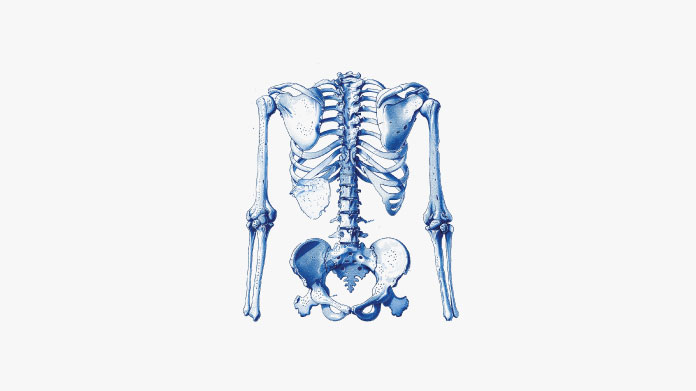
SuperBone Formula + Calcium Orotate
Complete your selection
What is in SuperBone Formula + Calcium Orotate
Any questions?
Orotates are mineral salts of orotic acid, a natural substance present in the body and also found in several foods.
Calcium is always sold in the form of salts (citrate, malate, carbonate, lactate, gluconate, orotate …) but the quality of this salt can be crucial to the supplement’s efficacy. Calcium carbonate supplements are the most commonly-available products, and the cheapest, but they are poorly absorbed by those with lower-than-average levels of gastric acid, which is unfortunately the case for most people over 60. They can also cause constipation problems.
Of all the supplements available, those in which the calcium is bound to an organic acid, such as calcium orotate, definitely offer the best rates of absorption, usually over 40%. They are more expensive but they deliver the calcium right to the cell nucleus, enabling optimal mineralisation.
Super Bone Formula is recommended for all the following groups of people:
- Those over 40 (bone mass starts to decline at this age, by 1%-2% a year).
- Post-menopausal women (in the decade following the onset of menopause, loss of bone mass accelerates by 2%-3% a year due to a decline in oestrogen production).
- Those with a family history of osteoporosis-related fractures.
- Women who do little or no exercise.
- Those suffering from inflammatory bowel disease (such as Crohn’s).
To see significant long-term effects, you need to take 3 capsules a day one with each main meal , (protein intake is important for calcium absorption) for a period of several months. The addition of magnesium to this formulation helps maximise the calcium’s absorption.
As it appears the body can only absorb a maximum of 500mg of calcium at a time, you’re strongly advised not to take the daily dose all in one go.
With Calcium Orotate, you get 1350 mg of calcium orotate (providing 275.4 mg of elemental calcium) and 150 mg of magnesium orotate (providing 20 mg of elemental magnesium) every day.
Note: people with a high intake of animal protein appear to have a greater requirement for calcium.
There are a number of additional steps you can take alongside calcium supplementation:
- supplement with other beneficial substances (BMPs, …) or natural formulations like Super Boswellia and Vitamin D 5000 IU.
- make sure you frequently expose your skin to the sun;
- reduce your consumption of caffeinated drinks (as they encourage loss of calcium and thus bone resorption) ;
- take up or resume regular exercise (at a level appropriate for your physical condition).
Interactions to be aware of:
- avoid taking other mineral supplements at the same time;
- antibiotics, bisphosphonates, and thyroid hormones should be taken at a different time to calcium (a gap of at least two hours);
- diuretics, corticosteroids and heparin all increase our requirement for calcium.
For significant long-term effects, supplementation should be extended for several months, at a dose of 4 tablets a day.
A number of other measures can be adopted at the same time:
- supplementation with other beneficial substances (BMPs, …) or natural complementary products such as Bone Health or Super Boswellia.
- regular exposure to sunlight;
- reduced consumption of caffeinated drinks (as they encourage loss of calcium and thus bone resorption phases) ;
- taking up – or returning to – regular exercise (appropriate for your state of health).
Osteoporosis is a natural process, primarily associated with ageing, which is characterised by a decrease in bone mass and density. It makes the bones more ‘porous’ and more vulnerable to fractures even from a simple fall. As this bone loss tends to be asymptomatic until you suffer a fracture, it is known as ‘the silent disease’. But what causes this loss of bone?
The bones in the human body undergo remodelling throughout our lifetime as a result of a dual process:
- A resorption phase during which specialised cells called ‘osteoclasts’ eat away at existing bone structures. This process results in repeated depressions on the bone’s surface (called ‘Howship lacunae’).
- A formation phase during which other specialised cells called ‘osteoblasts’ make new bone structures to fill in these depressions and replace the resorbed bone. Minerals then accumulate in the new bone matrix to optimise the bones’ mechanical resistance.
This two-fold process enables the body to remain in tune with its environment. Damaged bone is rapidly re-made and the body can even build stronger bones if the environmental conditions change (new physical activity, for example). However, it’s important for this dual process to remain in balance. If the resorption phase takes over or if the building blocks – such as calcium - are missing, the depressions are never filled in and the bones become dangerously fragile. This is exactly what happens with osteoporosis.
A high-salt diet plays a role in depleting calcium stores as sodium takes calcium with it when it is eliminated from the body in urine (2012) (3).
What has more of an effect on bone strength and resistance – nutrition or exercise? A team from the University of Michigan has concluded that it’s nutrition, though the two factors together are even more impactful (2018) (4).
This product’s capsules are composed of HPMC (hydroxypropyl methylcellulose), a plant substance derived from cellulose. HPMC is widely used for medicines and dietary supplements. It contains no animal ingredients, is recognised as safe by health authorities and is considered more sustainable than synthetic alternatives.

